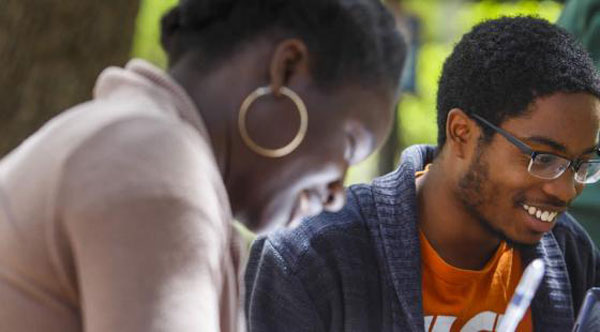- La Feria Community Holds Succesful Business Mixer Event
- Little Nashville to Take Place in Downtown Mercedes
- Lions Basketball Captures District Gold
- La Feria ISD Students Compete in Regional Chess Tournament
- Lions End First Half of 32-4A on a High Note
- La Feria ISD Held Another Successful Parent Conference
- Strong Appearance for Lions at Hidalgo Power Meet
- LFECHS Students Get to Meet Local Actress
- Students Participate in Marine Biology Camp
- Two LFECHS Students Qualify for All-State Band
Forecasting Common Challenges for Incoming College Students Can Reduce Inequality, Study Shows
- Updated: June 10, 2016
AUSTIN, Texas — Incoming college students, especially students of color and first-generation college students, who anticipate challenges and recognize these as normal and temporary are more likely to remain enrolled full time and receive better grades, according to a study led by a psychology researcher at The University of Texas at Austin.
New research, published in the Proceedings of the National Academy of Sciences on Monday, suggests a new psychological approach may help close the large gaps that remain in the rates at which racial, ethnic and socioeconomic groups in the United States succeed in college by up to 40 percent.
All students face challenges in transitioning to college, whether struggling in a class or having trouble making friends. However, students of color and first-generation students often enter college knowing their groups might face negative stereotypes and have historically been less successful in college than others. This knowledge can seed toxic worries, lessening their chances of collegiate success, researchers said.
In a study led by UT Austin psychology Assistant Professor David Yeager, researchers suggest that incoming students who are exposed to challenges that are common and improvable become more likely to get involved on campus, build relationships and ultimately succeed at a higher rate.
Three institutional-scale, randomized controlled trials presented participants with stories from older students describing social and academic challenges they faced in coming to college. The stories presented these experiences as being normal and improving with time. Incoming students then reflected on why early challenges are routine in the transition to college, and what they expected to experience.
These exercises — referred to as lay-theory intervention — presented online during the summer before the first year of college, were related to incoming students’ improved persistence and success during the first year.
In a sample of more than 9,500 students, the institutional achievement gaps in full-time enrollment and grades between students from disadvantaged backgrounds and other students at the participating schools improved by 31 to 40 percent.
“One reason these findings are so exciting is that they validate and replicate findings from earlier research conducted with a much smaller set of students,” Yeager said. “With more than 9,500 students, these studies provide an unparalleled test of the replicability and policy-relevance of such exercises to help students anticipate common challenges in the transition to college.”
As compared with a randomized control condition, students from disadvantaged backgrounds who completed the exercise were more socially and academically integrated in college, more likely to complete the first year enrolled full time, less likely to fall in the bottom of the class and earned higher grade-point averages.
The authors emphasized that these exercises do not work in isolation but help students take advantage of opportunities available to them, such as academic assistance or student organizations. For the exercises to be effective, students need access to such resources and support.
“It helps to know in advance that it’s normal to struggle at first in college. It doesn’t mean you’re dumb or that people like you don’t belong in college,” said co-author Greg Walton, associate professor of psychology at Stanford University. “When you know that struggles are normal, it’s easier to take a chance on making friends even when you feel different or isolated, join a student group, or go to your professor’s office hours.”
Yeager and Walton are principal investigators for the College Transition Collaborative, which aims to identify points of psychological friction in the transition to college and ways to remedy these.



